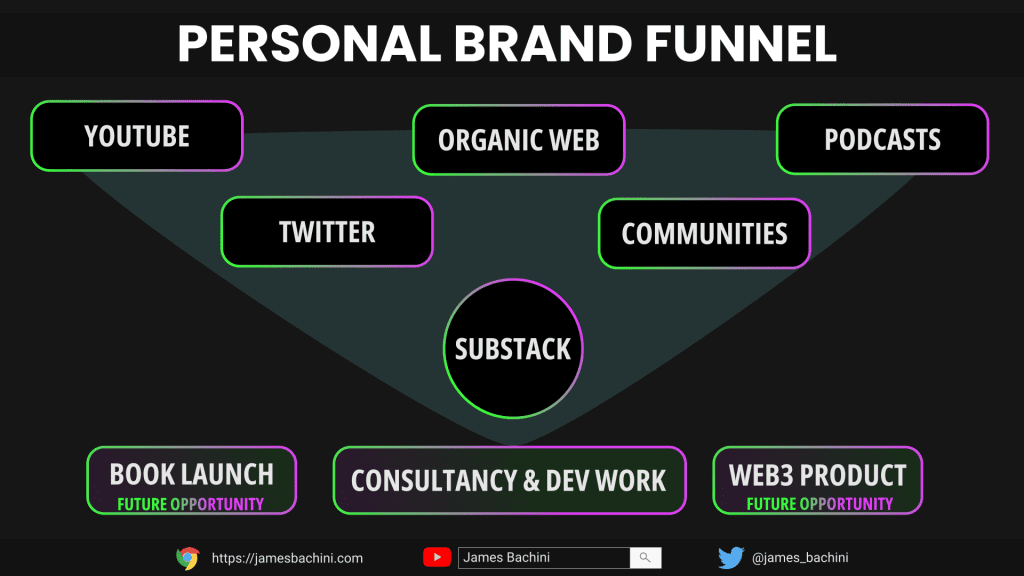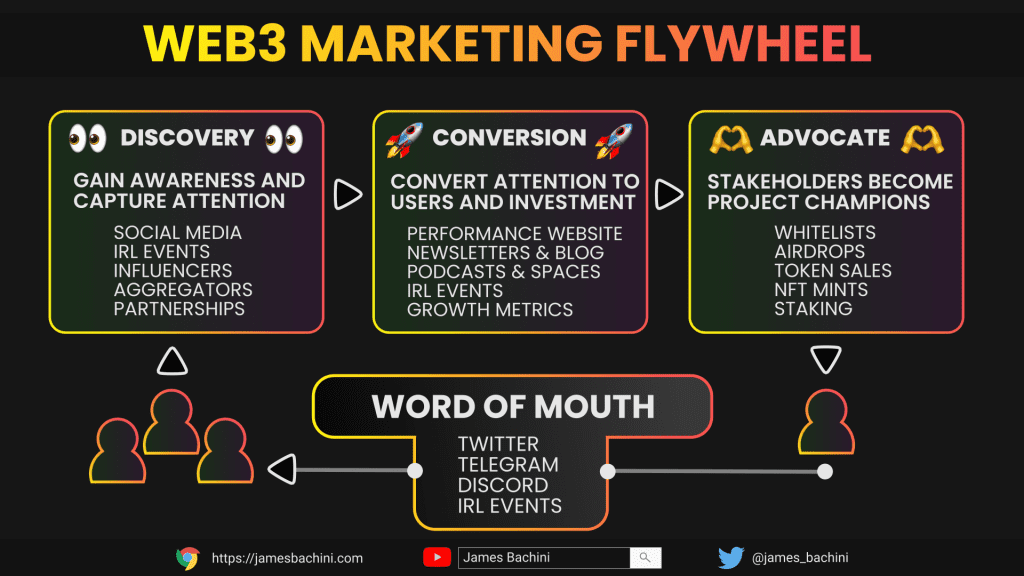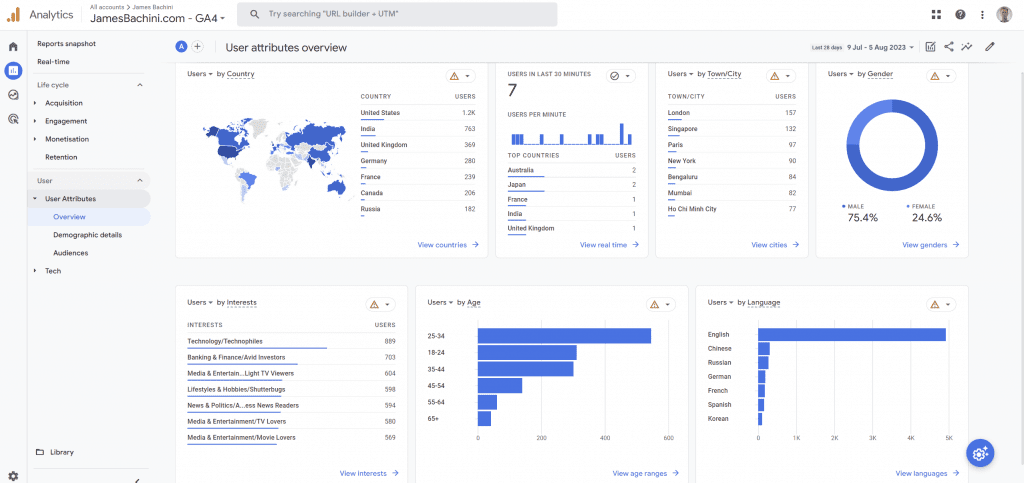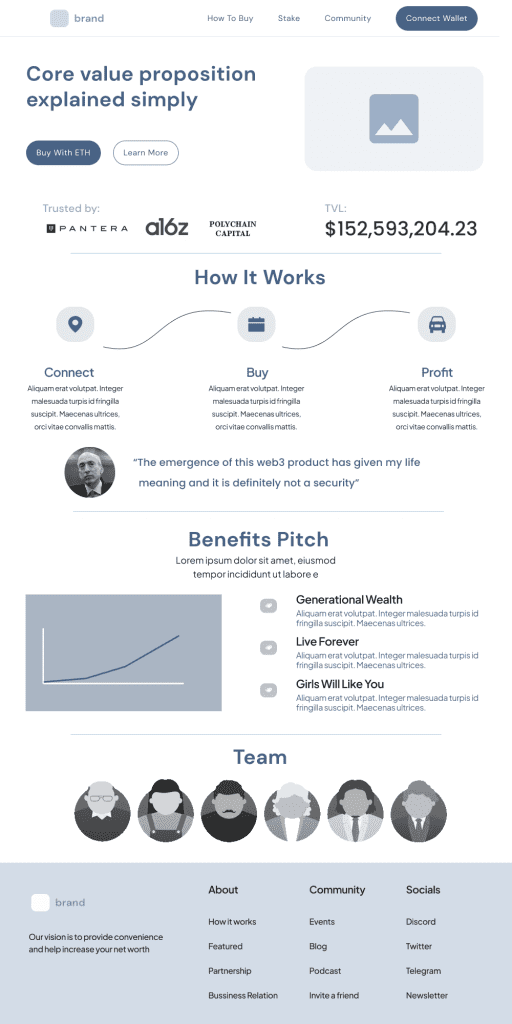My previous background in digital marketing and now having worked in the blockchain sector for 6 years provides unique vantage point on the differences between conventional and web3 marketing.
Successful crypto projects create communities of advocates who act as micro-influencers championing the cause. In this article I’ll discuss why “build it and they will come” is a pipe dream and real users are hard earned through strategic positioning and marketing strategy.
- Funnel To Web3 Flywheel
- Web3 Demographics
- Anatomy Of A Landing Page
- Seed Discovery Strategies
- Trust & Social Proofing
- Community Driven Marketing
Funnel To Web3 Flywheel
This is a standard web2 marketing funnel, in fact it is my marketing funnel for this site. If you are reading this then you are at the “organic web” discovery stage at the top of the funnel.

In Web3 it works a little differently as there is the potential to create community aligned financial incentives. Community members can hold digital assets such as tokens & NFTs either via an airdrop or investment decision. They then have skin in the game and are incentivised to contribute and promote the project.

This flywheel effect can create a viral co-efficient where each user goes on to refer more than 1 other user creating organic growth. This is much more common and easy to achieve in a bull market where there are more users who are more actively looking for new opportunities and technology.
Whoever said “bear markets are for building” never tried launching a new project in the middle of one where a dwindling community becomes sceptical and risk averse.
If you can get the web3 marketing flywheel right for your project it’s still possible to achieve growth and establish market share in any market conditions.
Web3 Demographics
These are the user demographics for my YouTube channel:

This is from this sites Google Analytics:

These metrics are common throughout the industry * * * and here are some noteworthy takeaways:
- 95% male audience, likely broaden over time as crypto moves from libertarian nerds to a mainstream technology.
- Age 25-35 is the largest bracket although wealth concentration in crypto is skewed towards the older participants who either invested early or have access to tradfi funds, you don’t get many 25 year old whales.
- It’s a very global industry, just 5% of my audience is based in my native UK country. This is why I try to Americanizzze my content and talk more clearly on YouTube videos (work in progress).
- Common interests include tech, finance and investment categories. From previous experience there’s also a correlation to autistic poker players.
Different projects will target different portions of the community such as B2C (business to consumers), B2B (business to businesses) and B2D (business to developers).
Anatomy Of A Landing Page
User experience and conversion rate optimisation aren’t widely used in crypto. In web2 it’s easy to optimise because you can track paid traffic and work on the website to improve return on ad spend via split testing etc.
In web3 there is a lot of room for improvement to create a streamlined, simple, intuitive user journey.
Let’s look at a simplified high converting landing page for a Web3/DeFi/NFT project. The figma file for this is available here.

Let’s break this down into sections and look at how we optimize each
Header
The top bar is pretty standard with branding, main links and a connect wallet button in the top right (conventional). The order and flow of the main links should follow your ideal customer journey through the site.
We then have the core value proposition which should be the largest text on the page and the first thing the user reads. It should be your clearest, most concise elevator pitch which describes the biggest benefit to what you do.
We then have two call to action buttons, a button which will trigger the connect wallet function if not already connected and then launch the web3 application or token sale interface. The second button is a “learn more” for cold leads that aren’t ready to dive straight in.
The hero image can be a application screenshot, fancy 3d graphic or an explainer video.
Below this we start to build social proof & trust by adding our partners & investors logos. The TVL (total value locked) stat is a favourite for conveying how much money is already held within the smart contracts. It shows the product is being used and trusted by others.
Explainer
The explainer section needs to be as simple as possible. The developers building the site will have a great deal more foundational technical knowledge than the average viewer. Most people want to skim through and get a high level overview of what it does, not how it does it, save that for the docs and link to them for more information.
Try to break down the entire process and product into 3 or 4 simple steps and lay these out with the final step showing the benefits to the user. Use icons and images to clearly illustrate the journey and keep text concise and easy for non-technical users to understand.
The space available at the end of this section isn’t wasted, instead we add a quote from a KOL to signal further social proof. If you can get quotes from partners, influencers or even team members it will help build credibility.
Benefits
This is the sales section of the page which outlines how the user will benefit from connecting their wallet. How will their life change for the better once they discover the amazing technology that is waiting just the other side of a dApp.
3 bullet points is the proven outline to maximise conversion rates.
If you have space at the end and it’s relevant you can add a second call to action button.
Team
If you are a doxed team then you should shout about it on your home page because it’s becoming rarer for developers and founders to want their identities widely known.
If you are working alone or as an anonymous team you can either leave this section out or replace it with something on investors, partners or ambassadors.
Footer
The footer is the least important part in my opinion as if a user gets to this stage something has gone wrong and they probably can’t find what they are looking for.
Use as standard template of contents links so that whatever they are searching for is linked to and accessible from the footer directly.
Additional Sections
This is the basis that every site should have in my opinion but it should also be broadened with project specific sections on:
- Roadmap
- Tokenomics
- Partners, Investors & Ambassadors
- How To Buy For Idiots
- Whitepaper & Pitch Deck
- Community Quotes/Tweets
- Embedded Uniswap/Tokensale Interface
Seed Discovery Strategies
Across social media there is a battle for attention and relevancy. Narratives shift fast and participants search out shiny new things where there is opportunity.
The initial discovery stage is built around building awareness and communicating value.
Something needs to stand out to create signal in the noise and chaos of the crypto ecosystem
This could be a premium domain name, growth metrics like TVL, a recommendation from a influential KOL, a hackathon win, a partnership or funding with big names. A nice user interface, well written docs and sexy smart contracts aren’t going to provide a wow factor to anyone that isn’t a developer.
The most important factor is a good narrative which gels with the user. This might be a trending sub-sector within the blockchain sector or great sales pitch which ignites the imagination for what your product can become.
If you can stand out and gain attention you’ll see it in the social media metrics. I worked on a project in 2017 where during a short lived bull run the user base started doubling every 3 days organically.
Before you reach organic growth you need some seed users. Your first 1000 users will set the tone for the project so it’s critical that you communicate your brand message and convey value to the right sort of people.
If you airdrop $1000 you can get 20,000 users overnight but 99.9% will be bots and the 0.1% of real users will have already moved on to the next airdrop. It might make your social vanity metrics look great but it’ll hurt over the long run as engagement is near zero.
Finding like minded users, investors and contributors is difficult and costs either time or money. If you are time rich then consider:
- Twitter Spaces Twitter Space is an audio social networking initiative introduced by Twitter, where groups can conduct live audio conversations. A web3 project can leverage this to conduct discussions about the project, its features or benefits, thereby driving people’s interest.
- Podcasts Podcasts are regarded as a popular form of content that is easy to consume. A web3 project can create a podcast series or even guest on existing ones to talk about blockchain and the project.
- Outreach Emails This involves sending personalized emails to targeted potential users or investors, introducing them to the concept of the project, highlighting its benefits, and thereby sparking interest.
- Conference Panels & Keynotes Participating in conferences as speakers or panelists presents a great opportunity to market the web3 project to a targeted audience. The project representative can discuss potential project uses cases, and how it might revolutionize the sector.
- Meetups Organizing meetups (online or offline) to discuss the project or the web3 technology in general can pique interest in the project.
- Linkedin Outreach Leveraging LinkedIn for targeted outreach to professionals and decision-makers can be very advantageous. Sharing regular updates about the project and useful content about web3 technology can increase visibility.
- Social media reply guy This technique involves actively participating in social media conversations about the technology or industry and subtly promoting the project or providing insightful content to drive interest.
- Memes & Hashtags Creating engaging and shareable content like memes and trending hashtags can boost discovery and interest.
- Blog Posts & SEO Writing informative blog posts about the project or helpful guides about the web3 technology, optimized with targeted SEO keywords can drive long-term organic traffic.
If you are money rich then consider:
- Influencer marketing Partnering with influencers in the tech/blockchain space can significantly increase a project’s visibility. The influencer can promote the project via social media posts or video content.
- Crypto banner ad networks Advertising on platforms that specifically cater to cryptocurrency or blockchain enthusiasts can be very beneficial in driving targeted traffic.
- Google Ads (including YouTube) Run targeted ad campaigns on Google search engine and YouTube to increase visibility.
- Twitter Ads Promoted tweets or ad campaigns on Twitter targeting users who are interested in blockchain or cryptocurrency can drive interest.
- Linkedin Ads Generally expensive on a cost per click basis but can target by profession which opens up options to target VC’s, Crypto Traders or Solidity Developers providing highly relevant audience for your campaign.
- Social media agencies Hiring a specialized agency can help manage and optimize social media marketing campaigns.
- PR Distribution Services Send press releases through popular platforms to reach a wider audience.
You can also list your project on aggregator sites like Coinmarketcap and Coingecko which will provide an initial small flow of interest.
Consider your timeframe for the project, if you are committed to building this project for the next 10 years then doing long-term evergreen content makes sense. If you are doing a quick money grab memecoin or NFT project then creating organic content which might not rank for 6-12 months isn’t a very good use of your time.
These are all top of the funnel channels which can help gain a seed audience to start building a community.
Trust & Social Proofing
Converting initial attention to users, investors and contributors is the next stage of the flywheel. The majority of market participants are interested in one thing “wen moon?”, which roughly translates to can I make money from this?
Communicating trust for new projects is critical and the best way to do it is through social proofing. This can be achieved through regular communications such as a newsletter, YouTube/Insta/TikTok videos, Discord/Telegram channels and Twitter threads. Newsletters are particularly good because they are a platform independent owned audience. Someone has given you permission to contact them because they want to receive your content, make it great, provide value and build a relationship.

Nurturing time is also important to warm leads and communicate brand values, social signals and trust. If everyone else is already storing their net worth on something called Lido it doesn’t seem as risky, if you are being asked to deposit hard earned funds into something you’ve never heard of, it becomes more daunting.
Community Driven Marketing
Once the community grows it becomes important to foster and retain those users. Most people in the space aren’t fixated on a single project and you continue to compete for attention & investment throughout the customer journey.
Having an ambitious roadmap and hitting targets helps here because it emits confidence in the founders and development team to execute on their ideas. There should be a constant daily feed feed of updates across all relevant social media channels.
The project should be active within the space, contributing and weighing in on industry events and drama. I think projects like Curve and Binance do this very well as they have a recognisable voice which is ever present on socials.
Users are always in search of the next shiny new thing so continue to innovate, build and provide new toys. If all else fails, ship dark mode and make a poll or DAO vote about it rolling it out as default.
Encourage users with skin in the game to go out and promote the project as micro-influencers. The project’s success relies on the communities ability to expand and establish itself within the crypto ecosystem. Projects like Luna did this very well with the “lunatics” and Chainlink with the “link marines” where they essentially created these tribes of loyal members.
This is the final step in the flywheel where the next community member hears about the project from their social media peers.


